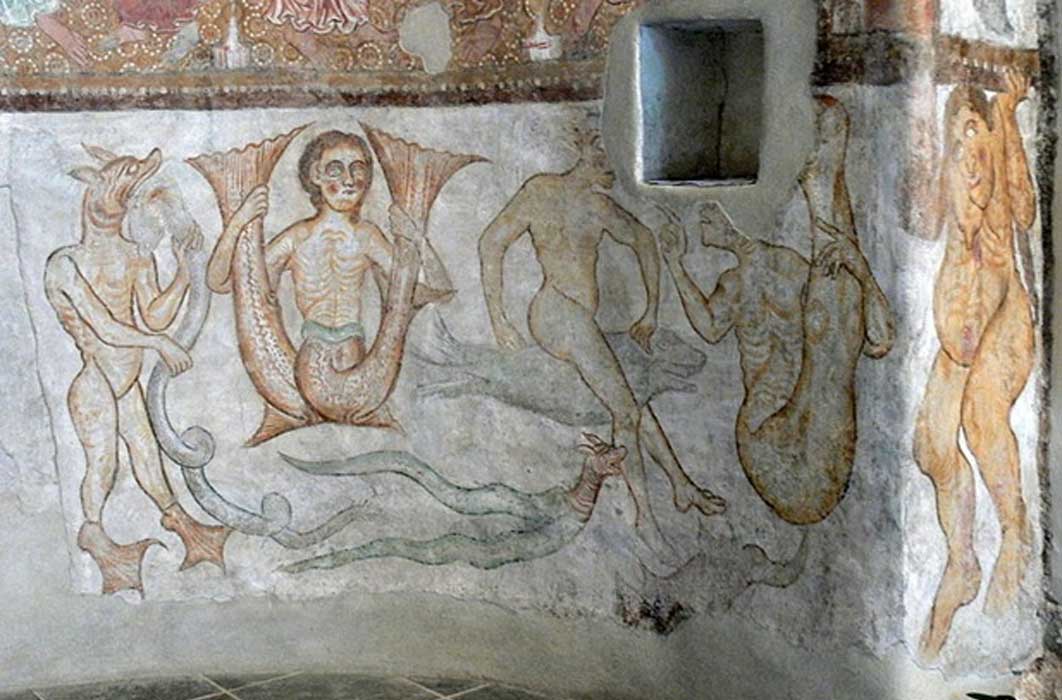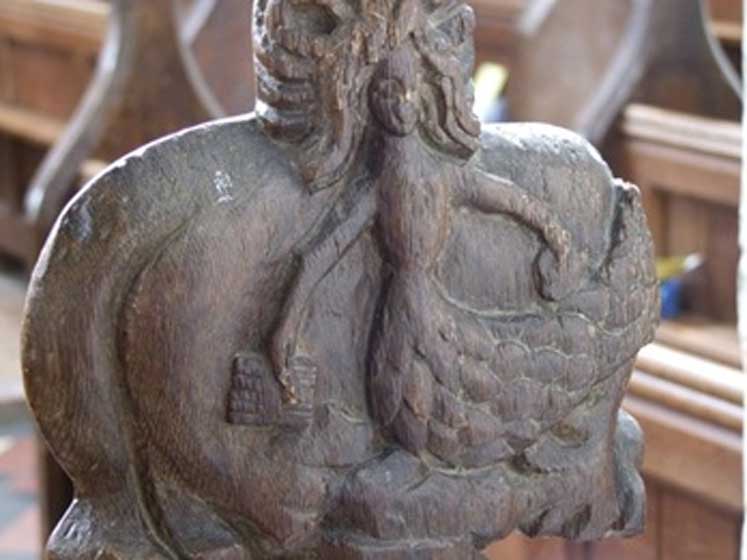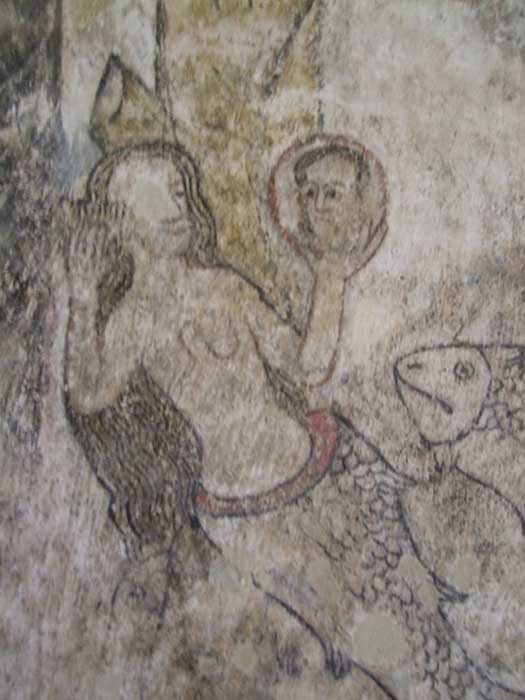
Hiding in Plain Sight: Medieval Mermaids in Churches
Why would an ancient, folkloric, but non-Biblical, character such as a mermaid find its way into so many medieval European churches? And can such mermaid imagery and symbology be correlated with the more overt pagan symbols of the Green Man and Sheela na gig?

14th-century mermaid bench-end at St Mary’s church, Ivinghoe, Buckinghamshire (Image: Courtesy John Vigar)
Common Pagan Symbols in Churches
There are numerous stone sculptures and wood carvings in European medieval churches that depict what may appear to be non-Christian imagery. Most discussed are those of the Green Man and the Sheela na gig, which have found various interpretations, from pagan symbols existing surreptitiously within Christian sacred spaces, to simple decorative adornments, created by masons and carpenters with the implicit approval of the Church.

Sheela na Gig, Llandrindod Wells Museum (Celuici / CC BY-SA 4.0)
Unlike many of the more straightforward carved images of animals and therianthropes in churches, the Green Man and Sheela na gig portrayals are not drawn from passages in biblical texts, strengthening the hypothesis that they are derived from naturalistic pagan belief systems and folkloric ideas, which continued to operate at some level below the radar of Christian orthodoxy throughout the Middle Ages. It appears as if there were a certain ecclesiastical allowance to tolerate these coded populist images, even if they were evoking (especially in the case of the sexually explicit Sheela na gigs) a potentially heretical cosmology.

Late medieval mermaid shown in a wall painting at St Botolph’s church, Slapton, Northamptonshire (Image: Courtesy John Vigar)
But there is another popular non-Biblical image regularly found in churches of all status, especially prevalent in Britain and Ireland: mermaids. They can be found in stone reliefs, bench-ends, misericords, roof bosses, and occasionally in wall paintings in almost a hundred medieval churches, usually prominent, sometimes hidden but most often following a similar design, which remained largely unchanged between the 11th and 15th centuries.




